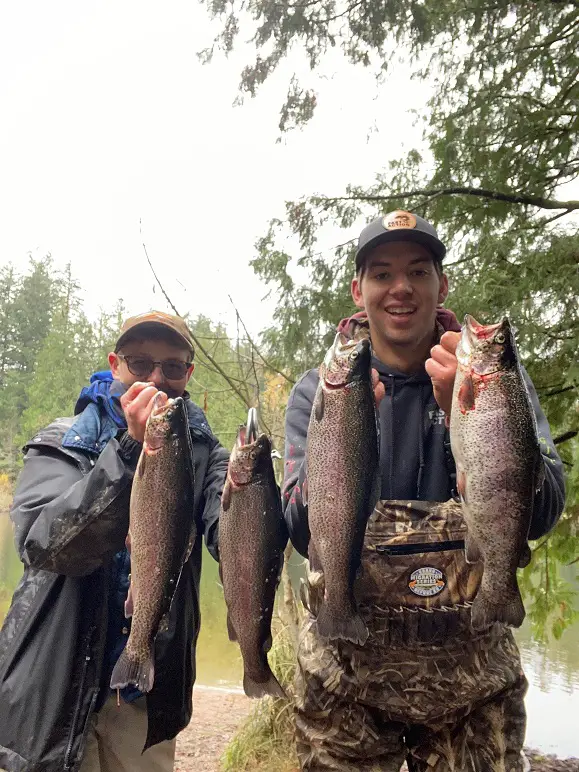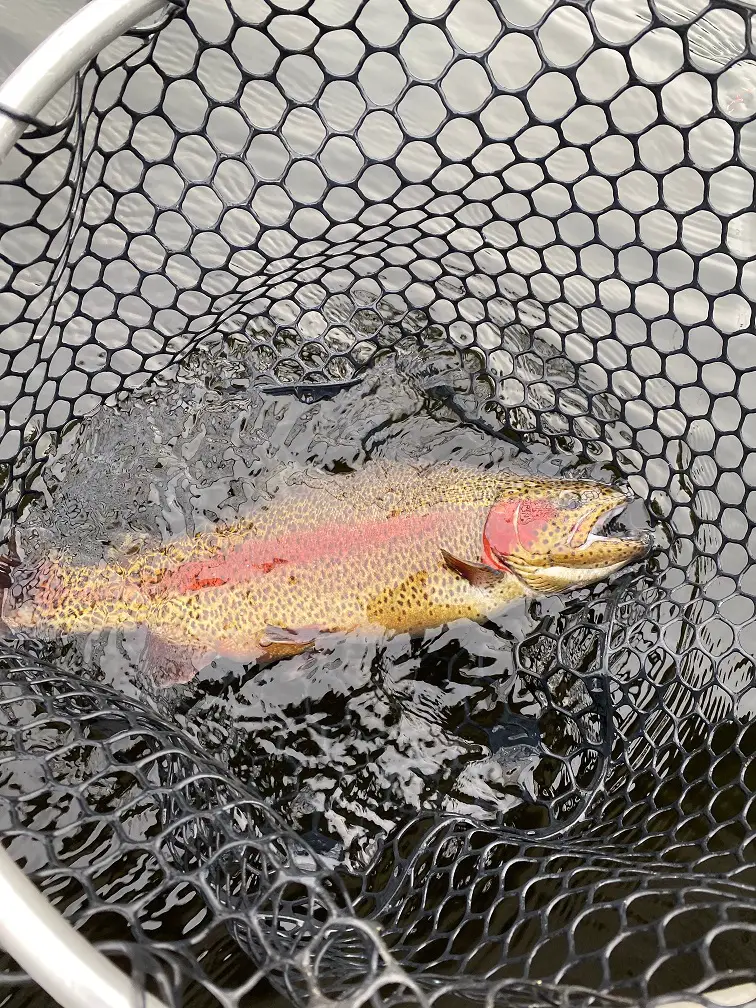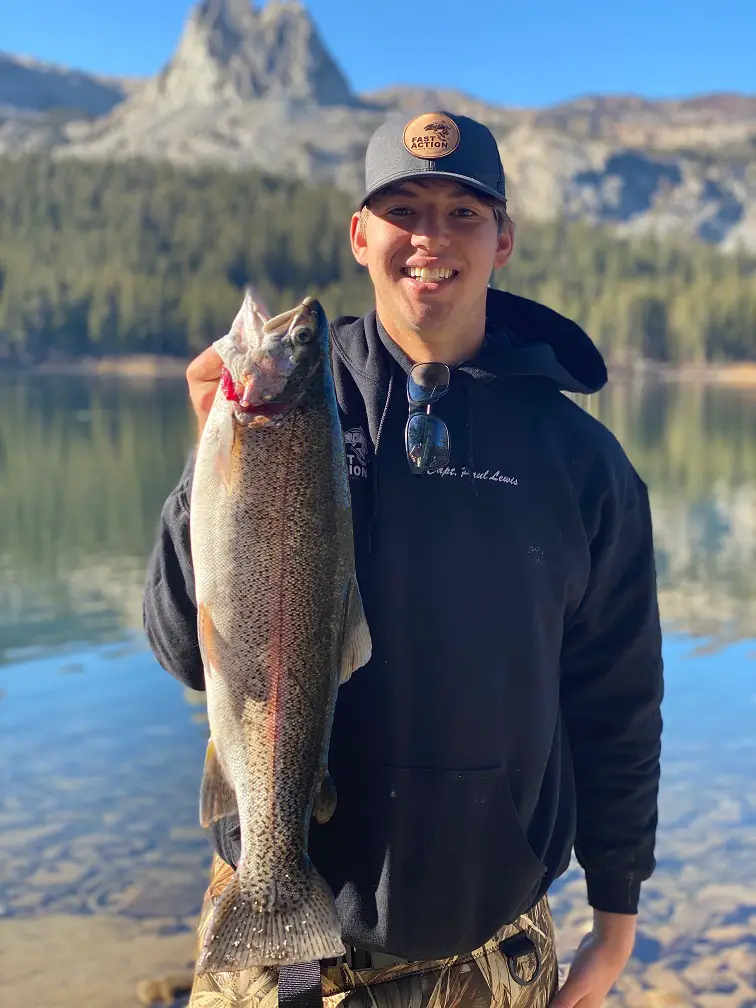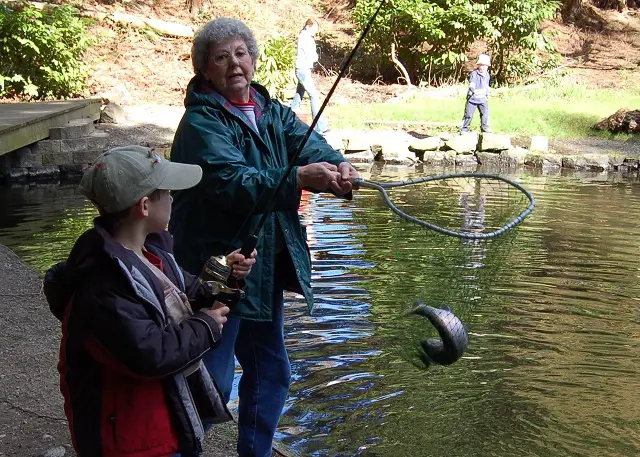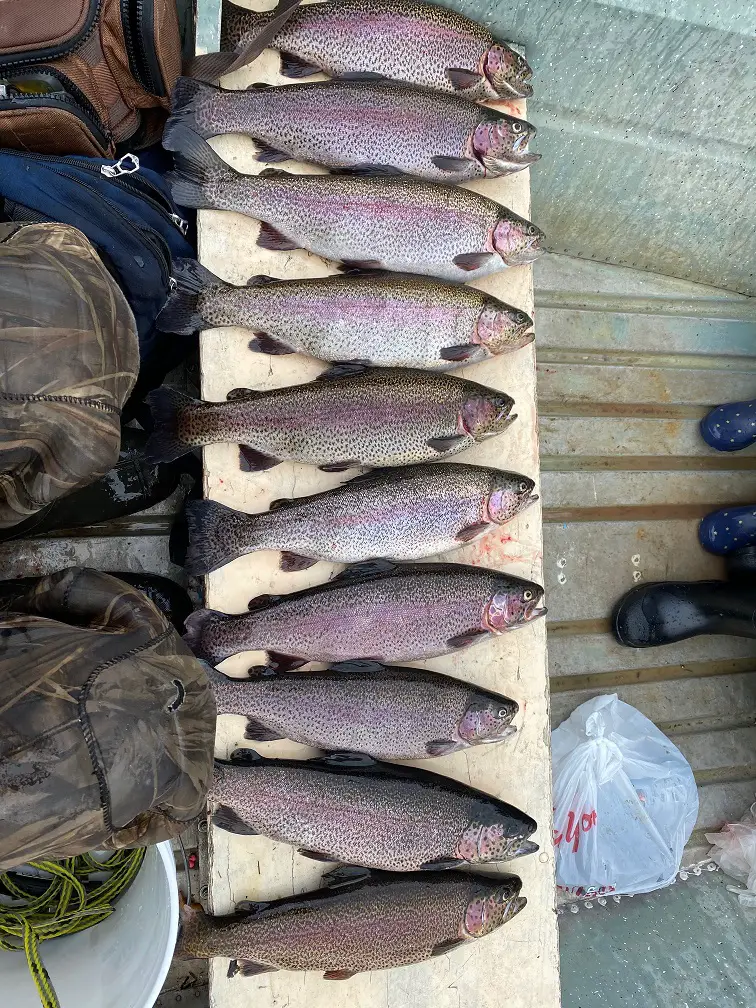Search
Latest Articles
Stocker Trout Fishing 101: from Tie Up to Fish On
by Paul Lewis, December 11, 2020
As a lifetime-angler turned fishing guide, some of my fondest childhood memories are from sitting on the bank of my local trout lake with my mom, learning together how to catch stocker trout. As I progressed in fishing and moved onto bigger water and different species, I still find myself a few times each year sitting on the bank or in a little 10-foot boat with a jar of Powerbait and a couple rods. Stepping away from the thousands of dollars in electronics, downriggers, and poles worth hundreds each and getting on the back to simple ultralight spinning rods and one little tackle box is often just what the doctor ordered to clear the mind and find the purest and most authentic love for the sport. No distractions, no screens, no big boat and large gas bill, just rod, bait, and fish. SO! Grab your rods and tackle box, give this article a read through for all the tips and tricks, then head to the shoreline for some fantastic trout fishing with a tasty payoff!
Rod and Reel Selection:
Gearing-up for stocker trout easy and almost any rod you have will work, however there are some options you can do to be more successful and make the fight more enjoyable. In rod selection, I look for an ultralight spinning rod with a really soft tip and fast action. Lots of times the bite on these fish can be a little soft initially, so having a rod that shows bites well will give you an advantage. My preferred rod length is 6’ – 7’6”, but any length will work. When I was first learning, I used a 5’ rod and it handled great, however longer rods give ease of casting when using longer leaders. You can purchase a great ultralight for trout fishing just about anywhere that sells rods. I still have a collection of rods for stocker trout that are fresh off a Walmart shelf! $25 rods catch trout just as well as $200 rods.
When looking to pair a reel with this rod, nothing fancy is necessary. I use a 1000-2500 series spinning reel, which has plenty of line capacity for the light line used when fishing for trout. A couple great options are the Shimano Sienna for $30, or the slightly pricier Pflueger President at $50. Same as the rod, any reel will work, and if you purchase a combo, the reel on there will work just fine.
Terminal Tackle:
In the terminal tackle section, you have 4 main components: your mainline, your rigging for a Carolina setup, leader line, and your hook selection. There are many ways to catch stocker trout, however the most tried and true way is fishing using a Carolina rig, which uses a weight on the bottom, then the buoyancy of Powerbait to float the bait off the bottom and into the strike zone.
Trout have excellent eyesight, so using a light-line is crucial for these fish. For my mainline, I run 4- to-6 -pound monofilament. Another advantage to this light line is great casting ability. With light line, you will be able to cast farther and more accurately much easier. Color wise for your mainline, I use clear or moss green, but any color will work. The trout will be interacting with your leader line, but the less visibility the better as a general rule of thumb.
Next step is setup for your Carolina rig. A Carolina rig encompasses a weight, a bead and a snap-swivel. On to your mainline, put a sliding egg or bullet sinker to start. The weight of the sinker will dictate how far you cast and how well your gear stays stationary on the bottom, and should be adjusted accordingly for wind, current, and distance. In almost all occasions, a ¼ to ½ ounce weight will work just fine. I always carry extras for breaking off on the bottom, and it is always a good idea to carry some extra sizes to adjust up or down in weight as needed. The reason for using a sliding sinker derives from fish-detectability. Sliding sinkers move free on the line, which keeps a trout from detecting the resistance of a heavy weight. Next, slide a bead below your slip-sinker to protect the knot attaching the final portion of your Carolina rig, the snap-swivel. The swivel is a crucial step to prevent line twist, which makes your line fragile and easy for the fish to snap. A small snap-swivel works great and is very low visibility, staying true to our rule of keeping as invisible as possible. Any knot will work, I just use a regular clinch-knot to attach.
Below your Carolina rig setup sits your leader line. For this section of line, I use 2-4-pound clear monofilament, or in extra clear water or water with a lot of snags, fluorocarbon. There are many ways to attach your leader, the easiest being just tie your leader right onto the swivel with a clinch knot. However, there are some alternatives that make it easy for fast-leader changes. One is attaching a barrel-swivel to the leader that can snap right on your snap-swivel. Another, and the method I use, is tying a perfection loop knot at the end. Just attach the loop to the snap, close, and fish on! When fishing a Carolina rig, we often don’t know the depth to fish at right away. In the winter, I use 2-3 foot leaders to start, but in the spring I’m often fishing 6,8,or even 10 foot leaders. So, a great practice is to tie up a bunch of leaders of differing lengths in advance of the trip for fast changing. One trick is to use a pool noodle to keep your extra rigged-up leaders on and tangle free. A bonus to extra leaders is fast changing if you happen to break off as well. I always bring 4 or 5 extra leaders with me per trip.
Finally, hook selection. I use 2 hooks when I am fishing for stocker trout with Powerbait. Firstly, a mosquito or octopus hook in size 8-10. These hooks are great when using the Power-eggs or attaching a little night crawler to your bait for some extra wiggle. One disadvantage to single-point hooks is the original Powerbait dough falls off very easily. So, to combat this I use a size 16 or 18 treble hook. Treble hooks help keep the dough on much better, ensuring you always have bait on the hook. Now, these hooks are indeed TINY! But in this style of fishing, we are not looking to release fish, so having the fish swallow the hook is no problem, and it is always cool to catch a giant fish on a tiny hook, right! An important side note, in Washington state when fishing with bait or scent, every trout caught counts towards your daily limit, released or kept. If a fish is mortally hooked, the good sportsman thing to do is keep it and not let it suffer and die from its injuries shortly after release.
Breaking Down Your Fishing Area:
When fishing, knowing where to cast to be most effective can be the difference between a skunk and dinner. Stocker trout are no different. When first planted, topography of the bottom does not play a big role. Fish are adjusting to their new home for the first 2-3 days after stocking, so when available I’ll fish close to the launch where the WDFW stocked the fish. As the days go on, I look for a bank with a nice drop-off into deeper water. A great indicator is the topography above the water. Fishing points or areas with a steep ledge are great options, and I try to avoid fishing bays where the water stays fairly shallow. Trout love cool water, so in the spring and summer when the temperatures rise, trout will be looking for nice and deep cold pockets. In the winter, the water is so cold the trout often become lethargic, so fishing for them in a spot with a drop off that allows for an easy feeding channel is a great place to start. Leader selection can be dictated by water temperature, but it is always important to stay above the weeds, so select a leader that will keep your bait out of the vegetation, regardless of where your sinker is placed on the bottom. When available, move around the bank until you start finding fish. Fish swim and could be anywhere, but if you can find a nice pocket of schooled up fish, you’ll be filling your stringer in no time!
Bait choice:
Stocker trout love Powerbait, which is what makes this type of fishing so successful. Powerbait possesses many similar ingredients to the pellet-feed from hatcheries, so it is a meal they are used to, but supercharged! Pellet-feed is the only meal most of these fish know, and a big glob of Powerbait both looks and smells like the food they are used to. There are many colors that work, however I almost always start with bright and vibrant colors, such as pink, orange, and chartreuse when I’m fishing Power-eggs, and my all-time go-to favorite dough color is rainbow. Having a good selection in your tackle box is a must, and when fishing with family or using a 2-pole endorsement, fish multiple colors until you find what is working. When stocker trout fishing, I almost always use powerbait, but I always bring a can of worms as well. Everything likes worms and they are a great way to catch “holdover” fish, or fish from previous plants who have adjusted their feeding habits from hatchery-pellet to natural sources found in the water.
On top of the bait, scents can give you the extra edge to entice bites. Along with their eyesight, trout have an excellent sense of smell, so scents can bring in fish from far and wide. My go to scents for trout are garlic, Trophy Trout, and shrimp, but many work (bloody tuna, crawfish, anise, etc.). “Wait a minute, garlic? Like the cloves in my kitchen?” YES! Garlic triggers reactionary bites out of trout on an enzyme level. Garlic is a must in your tackle box! The vast majority of the scents I use are Atlas Mike’s brand or Pro Cure. However, for an oil, I love Garlic Bite-On scent. For an added bonus, put some scent or your weight too! Anything to get some delicious smells in the water.
Where and When to Go
There are hundreds of lakes to choose from that are stocked with trout in Washington, and across the nation, and this method is great for all of them. A great place to start is call your local tackle shop, or the WDFW to find your local stocker lakes. Another resource I use often is the “WDFW Catchable Trout Plant Report”. The WDFW updates their website once to twice per week (Depending on season) with all of their recent trout stocks state wide. The website is very user friendly, giving the most recent stocks first, but allowing you to filter results by county, hatchery, or timeframe of stocking. This website can be reached at: https://wdfw.wa.gov/fishing/reports/stocking/trout-plants. Finally, keep in mind your season, and always check the regulations before hitting the water. Many trout lakes are only open during “fishing season” but lots are open and stocked year-round. Always know before you go!
In conclusion, there are tons of tactics that work for stocker trout, from casting spinners, fishing bobbers, and trolling, but for a great day on the bank with a time-tested method, Powerbait and a Carolina rig is the way to go. Add some scent for an added attractant onto your bait and give yourself an edge while out chasing these tasty trout around. So, check out the most recent plants, pack a picnic basket, grab your rods and tackle box, hop in the car with your family and go take advantage of some great fun, relaxing fishing, and making memories!
Tight lines,
Paul
